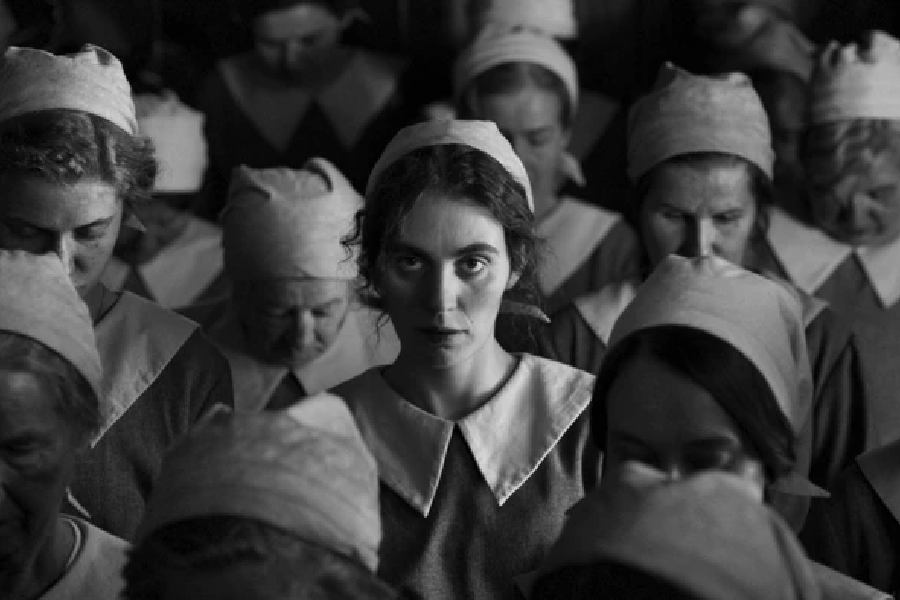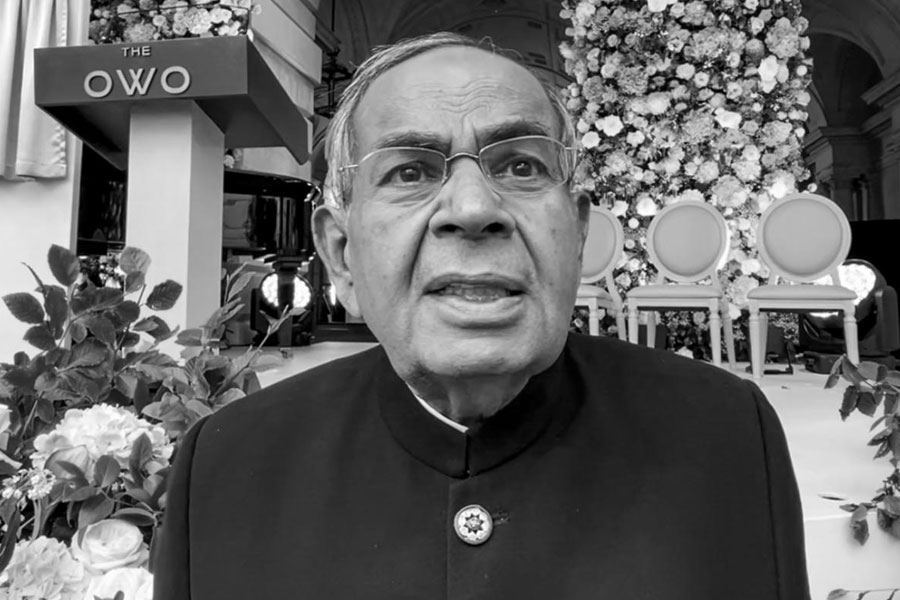Magnus von Horn’s The Girl With the Needle is not an easy watch. Denmark’s official entry for the best international feature at the 97th Academy Awards is the kind of film that leaves you reeling, thinking and searching for meaning.
Based on Denmark’s infamous 1921 baby killer case, The Girl With the Needle is a Gothic black-and-white drama that takes us to a post-World War I Copenhagen where cruelty thrives and hope barely flickers. The story follows Karoline (Vic Carmen Sonne), a seamstress whose life is hanging by a thread when we meet her, having been evicted from her apartment and forced into living in squalor. She hasn’t heard from her husband, Peter (Besir Zeciri), since he went to fight in the war, which has left her dangling in a bureaucratic limbo where she can’t claim a widow’s compensation. Desperation drives her into a romance with her factory boss, Jørgen (Joachim Fjelstrup), but that moment of hope is quickly crushed as well.
Von Horn devotes the first hour of the film to the series of misfortunes in Karoline’s life, painting a world where poverty is inescapable and the war’s scars run deeper than the battlefield. Peter eventually returns but he is unrecognisable. His face is disfigured and he is broken inside. Instead of heaving a sigh of relief, Karoline recoils in disgust. Peter finds work as a circus act, turning his war wounds into grotesque entertainment. It’s a searing account of how war ravages humanity and strips people of the last shred of dignity.
When Karoline crosses paths with Dagmar (Trine Dyrholm), a shop owner who runs a secretive adoption agency, it feels like she’s found a lifeline. But this is a film that thrives on subverting expectations. Dagmar’s warmth hides something darker and the ‘adoptions’ she facilitates are anything but benevolent.
Vic Carmen Sonne makes Karoline deeply human: an anxious woman with moments of strength and vulnerability who makes choices that are difficult to stomach. Trine Dyrholm is magnetic as Dagmar — in equal parts nurturing and terrifying — and keeps the audience on edge. The play between Karoline and Dagmar becomes the heart of the film, as their relationship swings between alliance and exploitation.
Cinematographer Michał Dymek uses stark black-and-white imagery to create a world that feels oppressive and suffocating. The crumbling alleys and dimly-lit interiors of post-war Copenhagen reflect the characters’ despair. Frederikke Hoffmeier’s score is equally haunting and amplifies the pervasive sense of dread.











